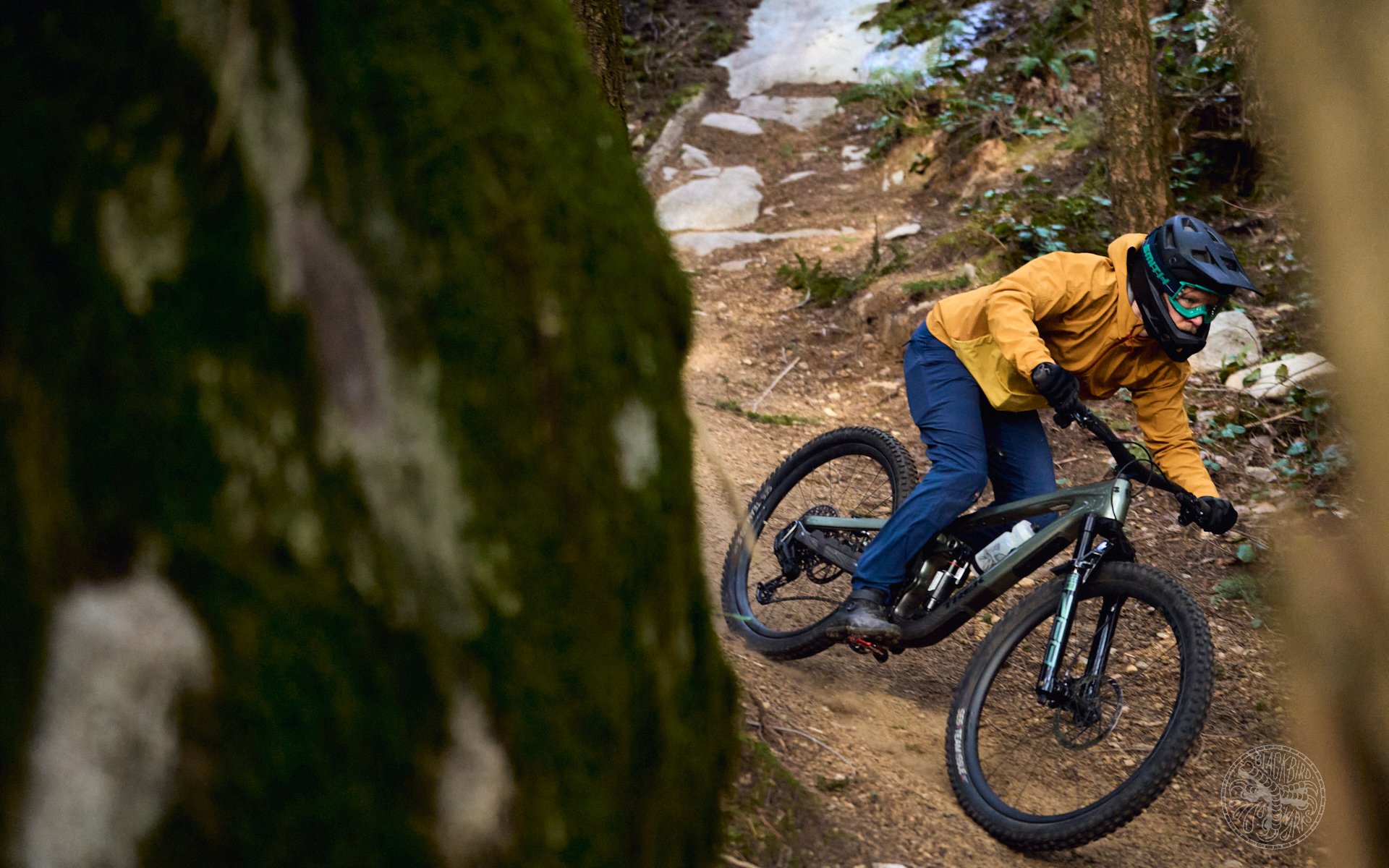
Full Review
2024 Trek Slash Review
I'm late, I know. The plan here was for this review to be out a while ago but a combination of injury, holidays, travel, weather, and family visits really set things back. Somehow the first month of 2024 is gone and while my confidence isn't back to 100%, my shoulder is feeling good, and I'm looking forward to more time in the dark, wet, slippery woods this winter on knobby tires.
After knocking the dust off it, I've been logging miles on the Gen 6 Trek Slash; we got off to a slightly rocky start but we get along well now. The bike is most of the bruiser I expected, but has been pleasantly surprising in a few facets.
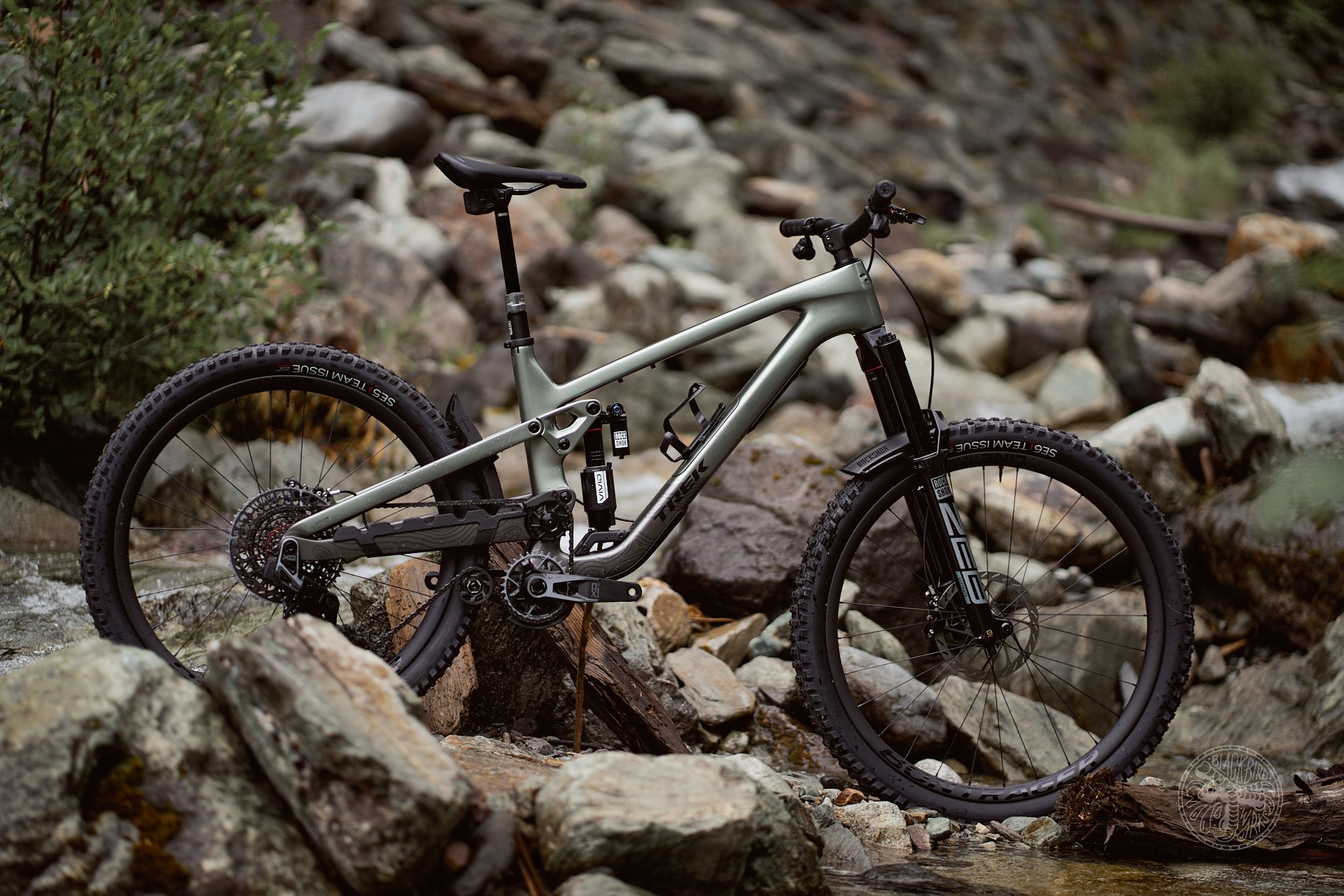
The Gen 6 Slash retains a classic Trek silhouette, with their ABP four-bar layout. Notably, they've moved the main chainstay pivot up significantly, and added an idler.
Frame, geometry, and components
As usual, we covered a lot of the changes, details, and spec choices on the new Slash in the First Look – if you need a bit of a refresher and high level overview on how it differs from the Gen 5 Slash and what’s bolted on this high-pivot idler equipped Gen 6 version refer back to here.
As you'd hope and expect on a 12,000 CAD build, the component choices have left little to desire and have been nearly faultless. The only real exception is I’ve had more flat tires on the Slash over the past couple of months than I think I’ve had in the previous 12 months. Some of these were probably my fault (I owe Deniz several tubes and beers…). I enjoyed the riding characteristics of the SE6/SE5 combo but I didn’t enjoy repeatedly pumping them up. Your mileage may vary. Underlying those, the Bontrager Line Pro 30 OCLV* carbon wheels held up flawlessly. I added my standard ESI silicone grips to the uber-expensive one-piece RSL cockpit after narrowing them up to my preferred 780mm.
I was never able to fully silence the BITS tool that hides in the steerer tube. It’s a really well-designed tool, installation is dead simple, but it rattles. Putting some foam at the bottom of the offending orifice helped, but I could never find a good balance of “enough foam to make it silent” but not “so much I was worried the tool wouldn’t say put”.
*for more on Bontrager and OCLV, read past the pizza content here.
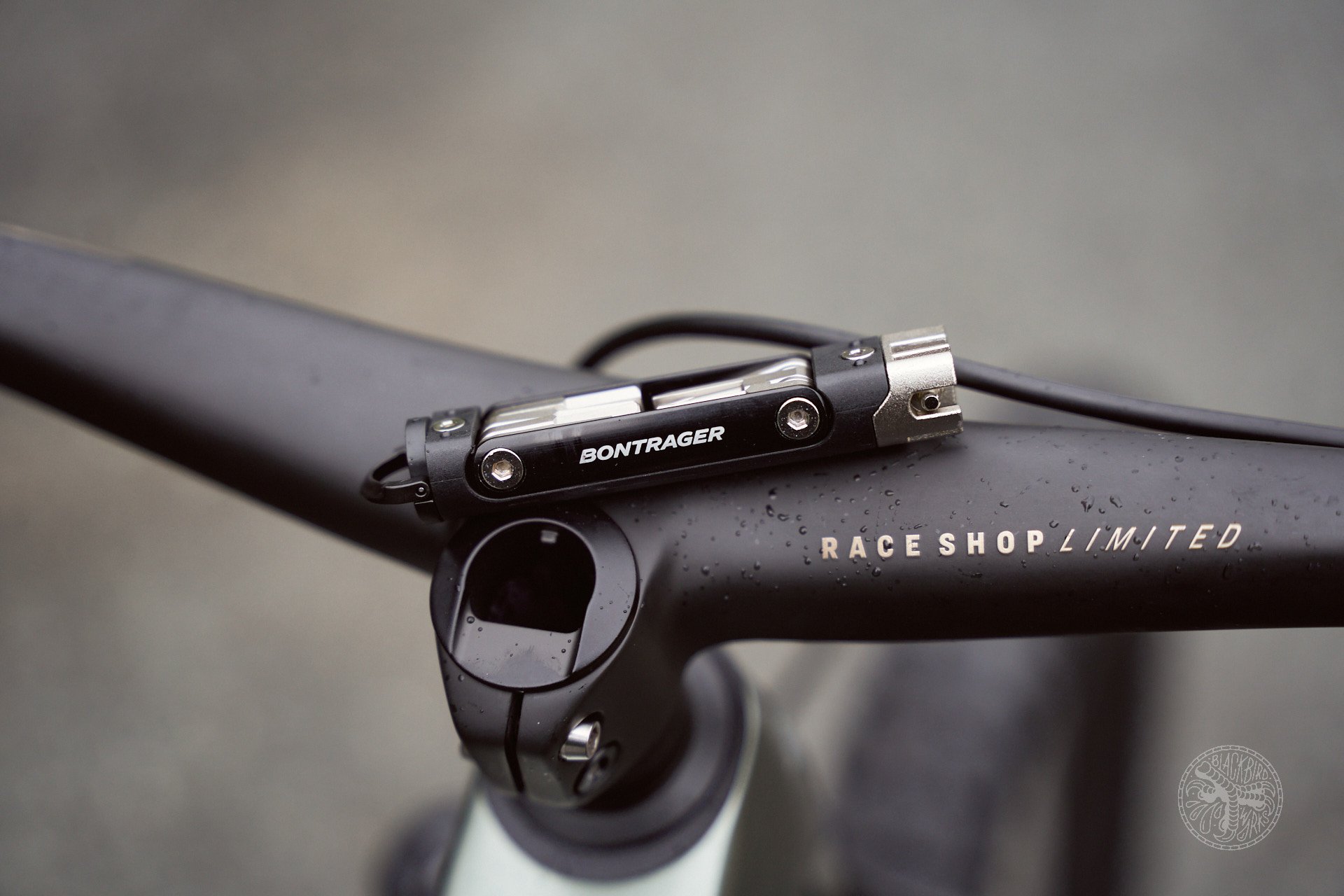
The only thing holding the BITS tool back is a rattling noise - the tool itself and how it installs are both top notch. The RSL handlebar is certainly a conversation piece; some people love it, others not so much.
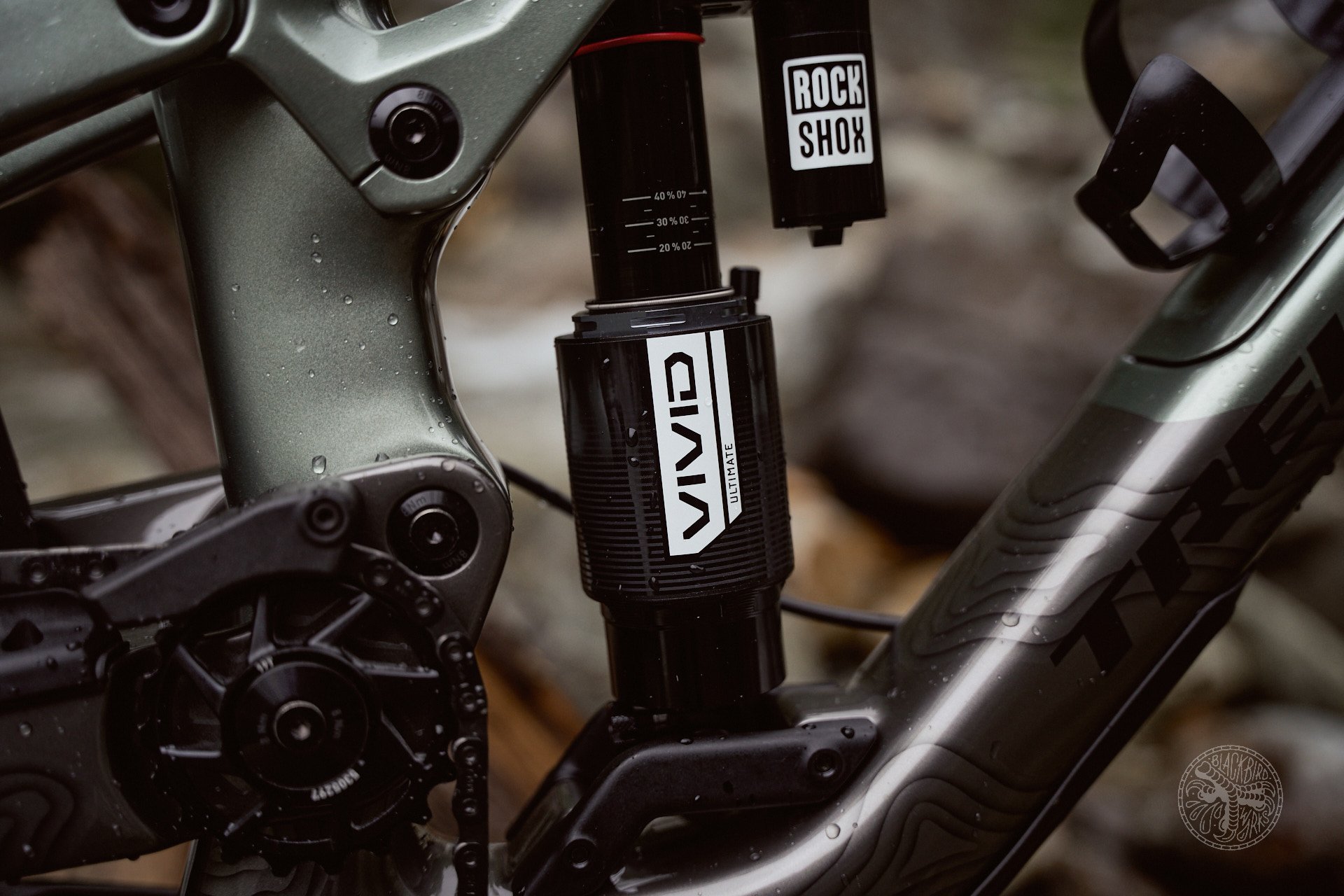
The new RockShox Vivid Air stood out - while it's impossible to fully divide attributes between the Slash's suspension and the damper itself without a pile of testing with other shocks and frames, it's clearly smooth, plush, and yet offers good support. I added a fair amount of hydraulic bottom out while waiting on a volume spacer.
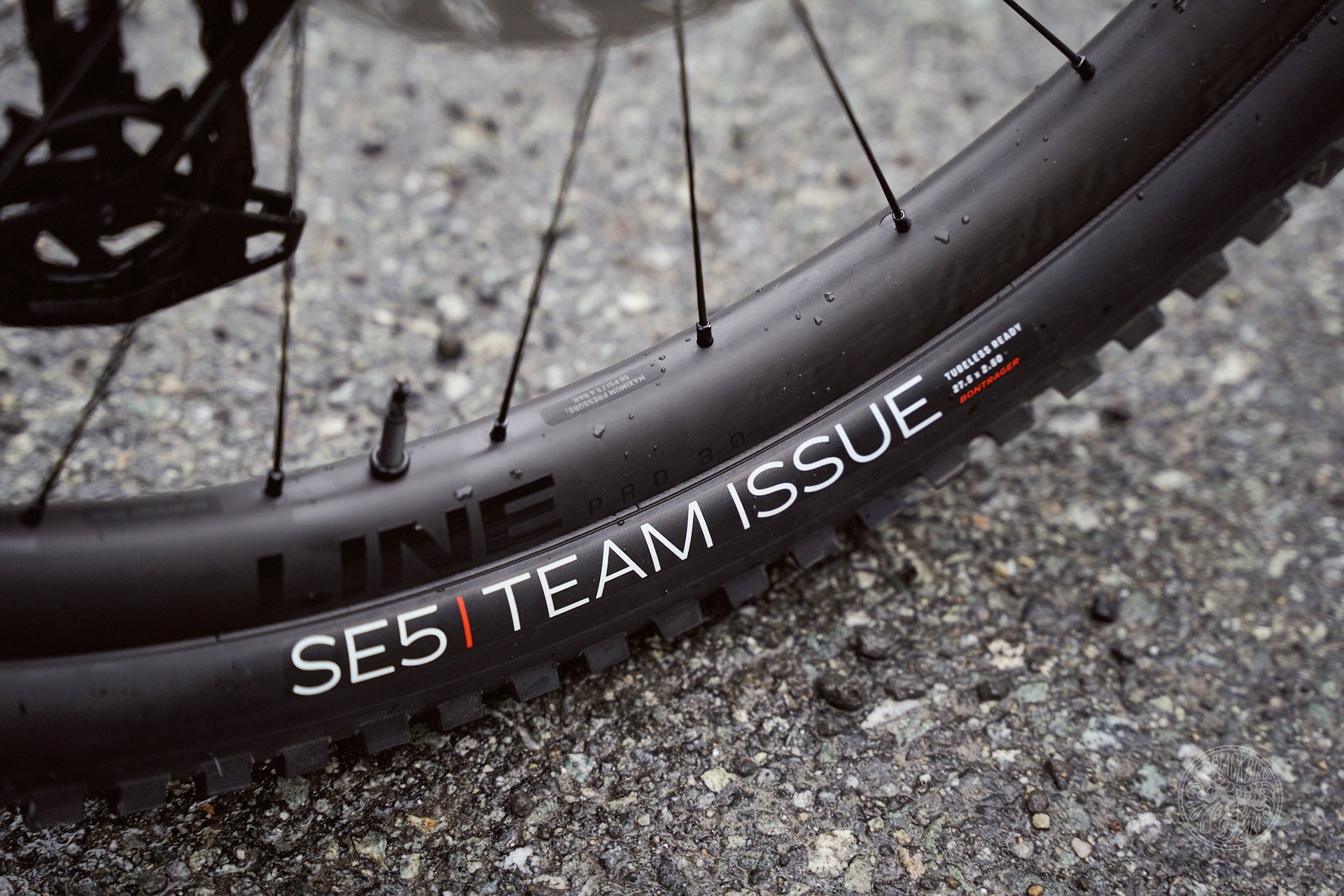
I enjoyed the wheelset, but tire durability was a challenge. This wasn't entirely the tires' fault, but it was notable during the review period, and is an issue I've had with other Bontrager tires.
On the suspension front, this was my first stint on the new RockShox Vivid Air and it was a standout. Buttery smooth and with good support, it matched the kinematics of the Slash very well and takes a real beating without breaking a sweat. A lot of superlatives get thrown around in marketing materials, but it is remarkably coil-like in feel (I say that having not tried this bike with an actual coil shock, mind you).
The drivetrain has also been trouble-free – there’s been some chatter on the internet about dropped chains and SNAFUs happening in the idler/tensioner setup, but I haven’t experienced this or talked to anyone I know who’s actually had issues. T-Type takes a bit of adapting – but adapt you will. Just push the buttons to shift whenever. Disregard decades of muscle memory, push the button. While downshifting isn’t lightyears different, velvety upshifts under all the [meagre] watts my muscles can generate are impressive and going backwards to older drivetrains suddenly feels very jarring. As I mentioned in the first look, the combination of 27.5" rear wheel, 30t front ring, and 165mm cranks isn’t my favorite; I’d be putting at least a 32t ring on here to help get a little more top end for all the paved bits between home and the trails.
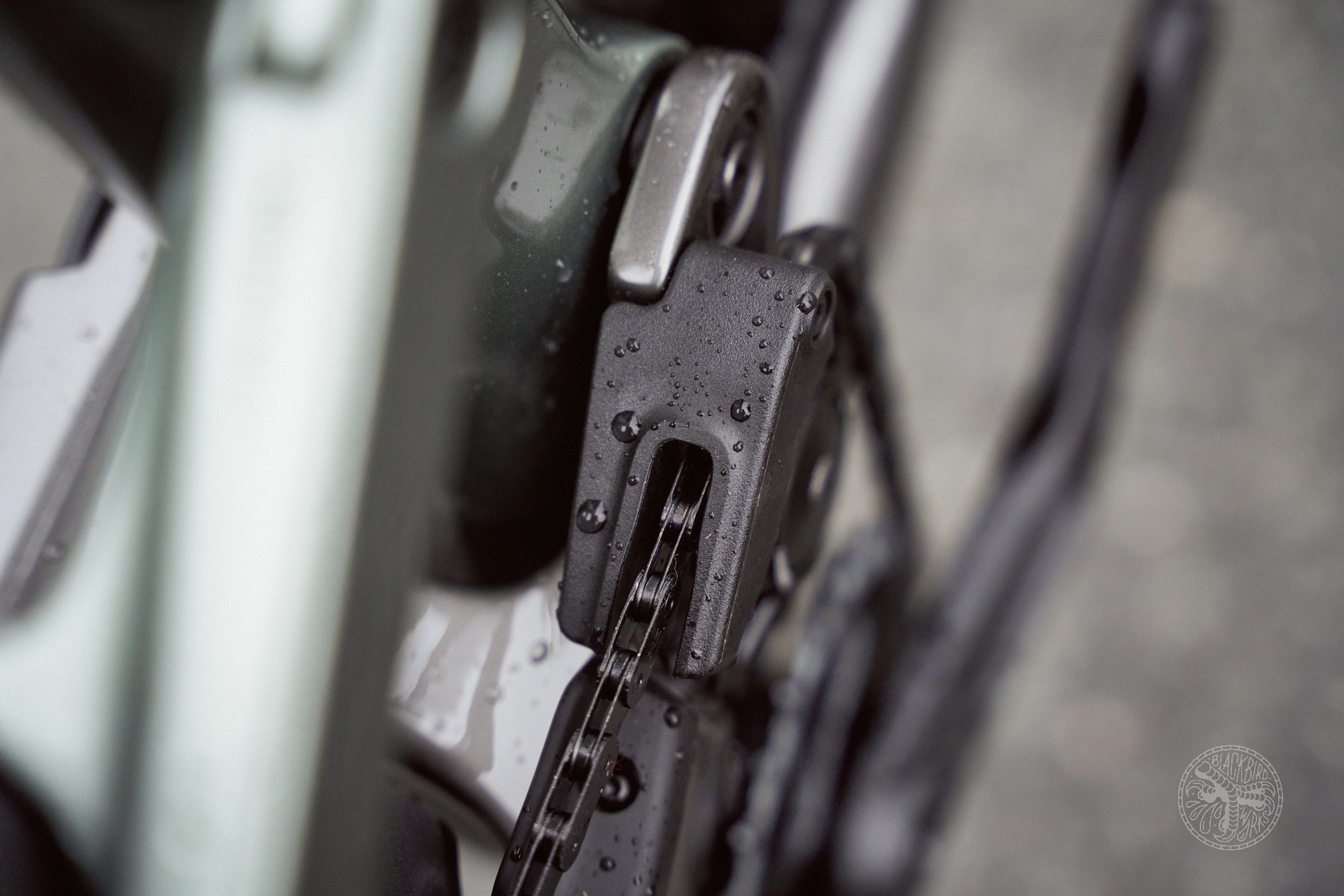
The top idler has an integrated guide.
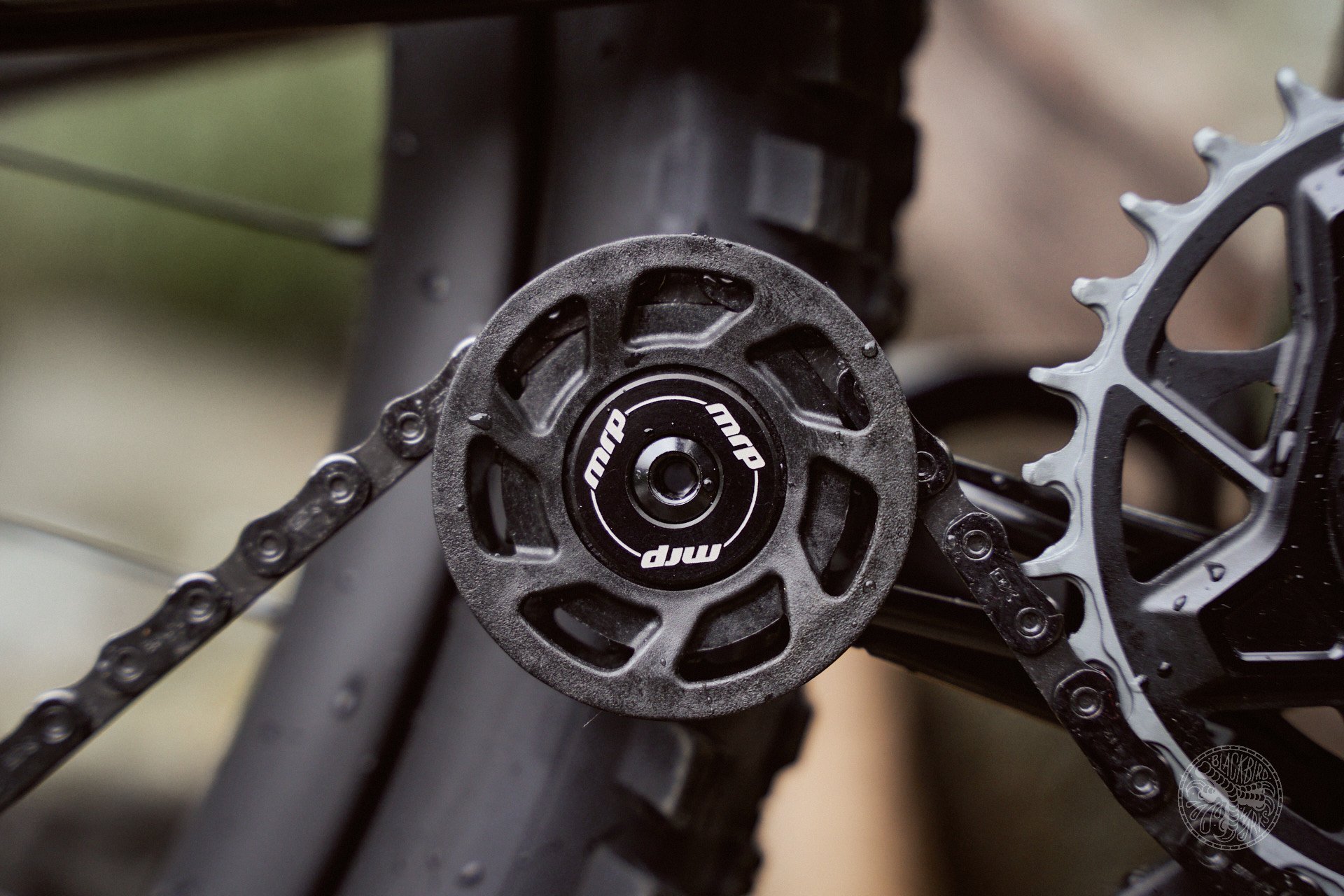
This lower tensioner has apparently been the source of some trouble, if you believe the internet. Trek has issued a technical directive to ensure they're appropriately shimmed and adjusted.
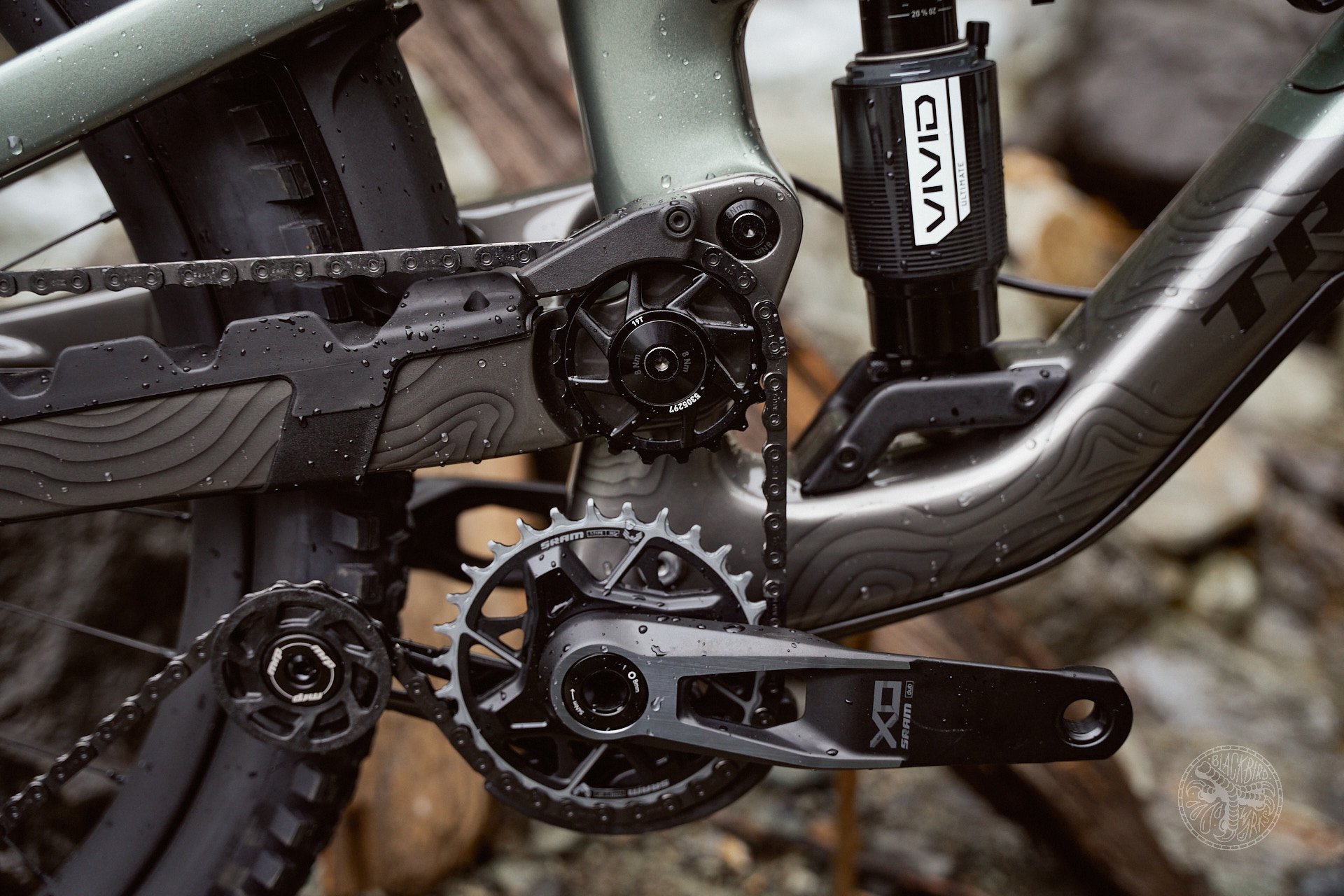
I'd ditch the bashguard for an integrated SRAM unit. Every millimeter in this area is precious.
We’ll talk some more about geometry when we talk about riding the Slash, but one of the most notable features is the low bottom bracket. Like, it seems really low. I’d be tempted to pull the stock bashring off and add a SRAM integrated ¼ bashguard to gain any precious millimeters I could. I’ve also kept it in the stock geometry – there’s provisions to add or subtract a full degree from the head tube angle with cups from Trek. I’d argue these cups should be included with purchase, instead of 52 CAD.
I'd also ditch the in-frame storage. Clearly brands keep adding 'features' like this because customers buy it and it's an arms race on the floor of your LBS, but it's not a feature I care for.
Everything else worked as advertised, and the squeaking noise I reported in the First Look never occurred again; my only possible explanation is some funny mold release compound or something on the chainstay guard that wore off quickly.
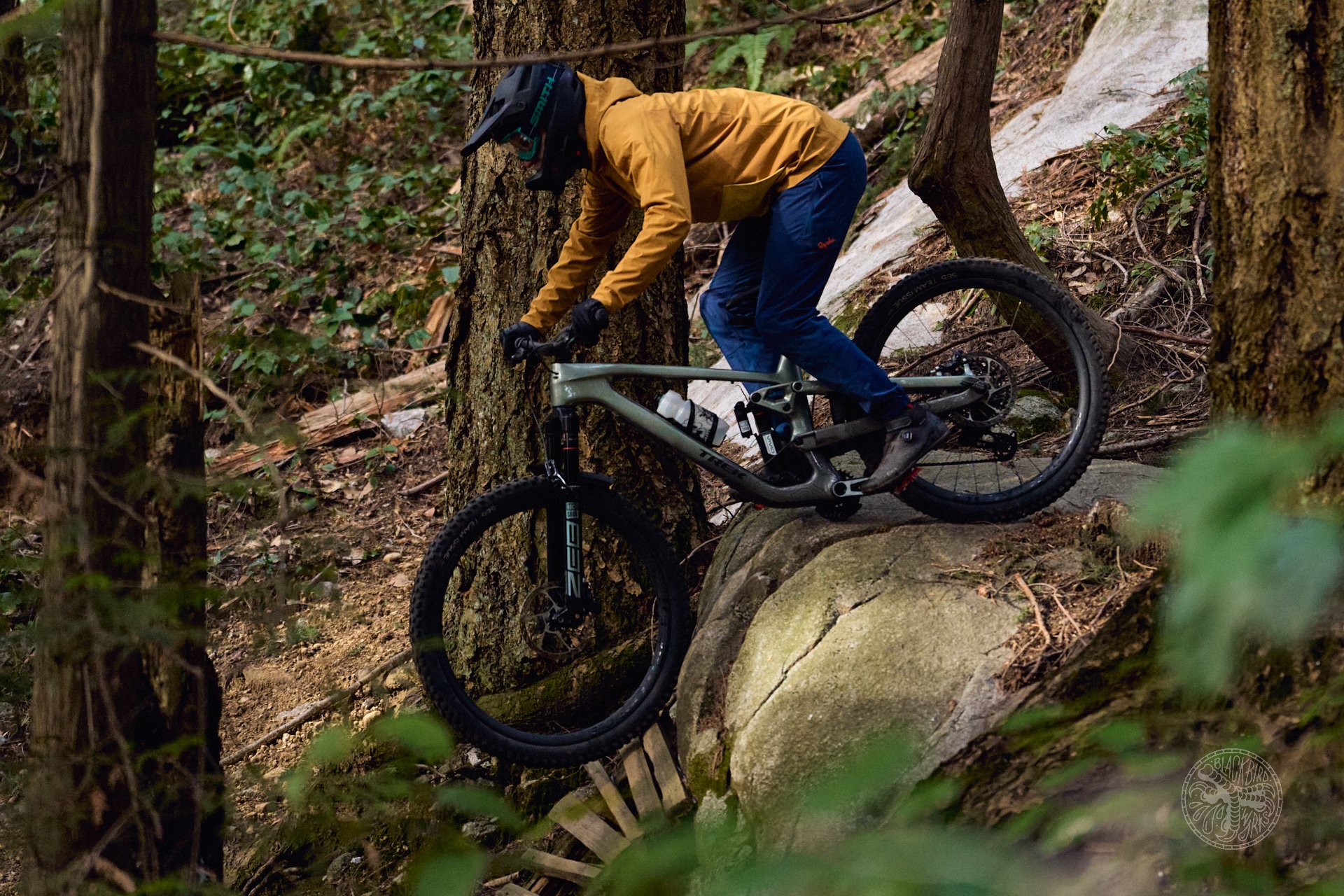
KLONK. I hit the Slash on a lot of things - and a lot of times it felt unfair, and I'm not sure I would have hit them if the bashguard wasn't there. It was disconcerting every time.
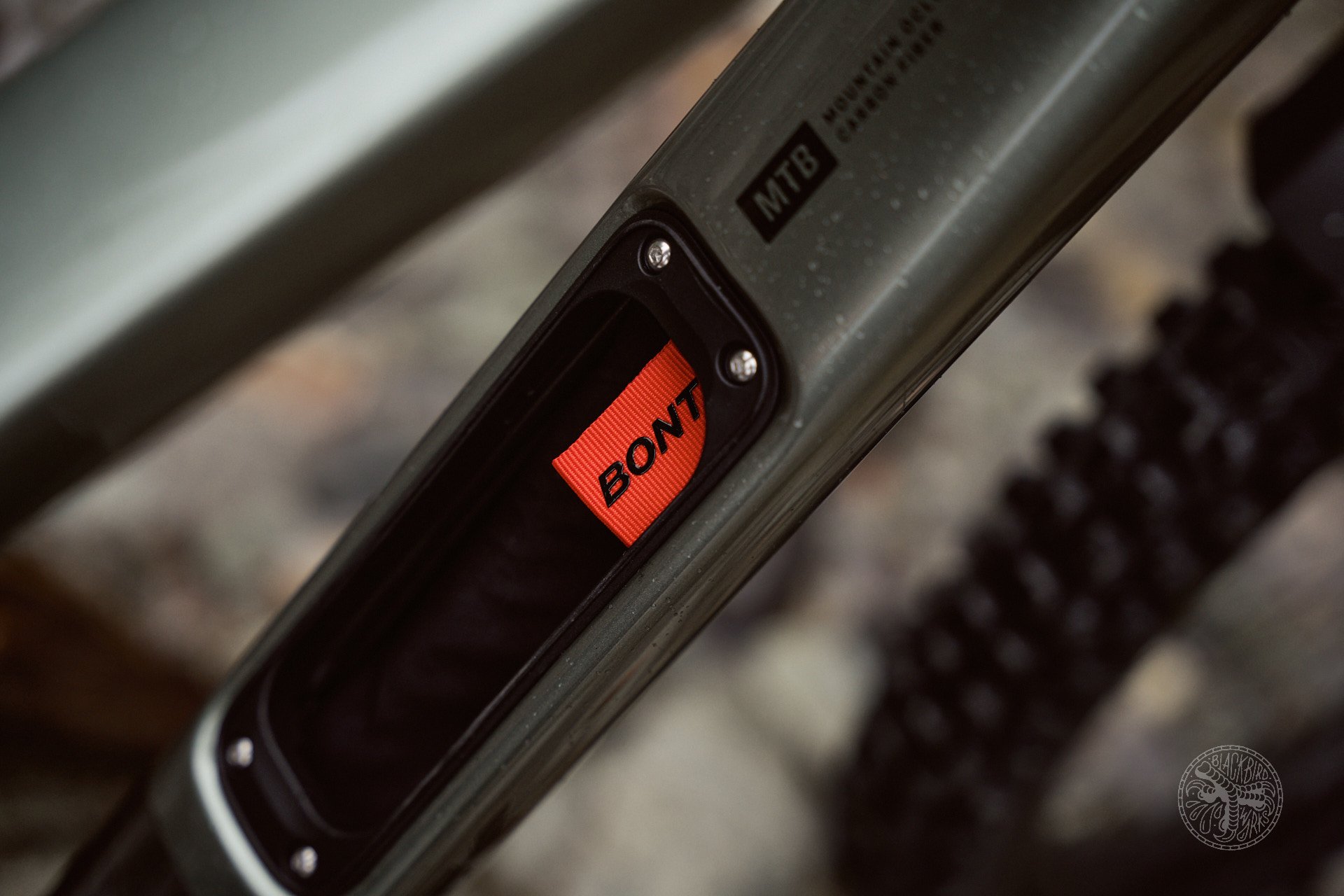
I find these add more fuss than utility. The Slash has an accessory mount under the top tube - this is a better solution.
Climbing
I really expected this to be where the Slash fell short. And, while it's certainly no Top Fuel, it was significantly less bad at going uphill than I anticipated. There’s no way to completely hide that it’s a nearly 35-pound mullet with a 63-degree head tube angle and a chain that winds its way through not one but two extra pulley wheels. There’s a moderately annoying level of extra drivetrain noise when things are clean that intensifies in mud, but it really doesn’t feel much slower than a lot of other bikes in its class. It’s not going to be my pick for all day backcountry missions, it’s a bit floppy on tight steeps, and it's sluggish on techy undulating “cross mountain” style connector trails, but overall it gets the job done. These things are a double-edged sword, and the active suspension means there’s gobs of traction on rough climbs if you can keep the front end down and winch away with the 30x52x27.5 stump-puller.
I know the comments section will probably sound off about how many watts are or aren't lost in a complex drivetrain setup like this, but maybe we can just skip that part? Either it's something you're worried about or not. I'm here to say - as someone who pedals up most of the hills I want to ride down - that barring awful mud or race situations it was fine so long as the noise doesn't gnaw at you. If you're desperate to debate this, I'm happy to put a power meter on the Slash and compare with my Arrival up the road on Seymour as many times as you like - just let me know where to submit my hourly invoice.
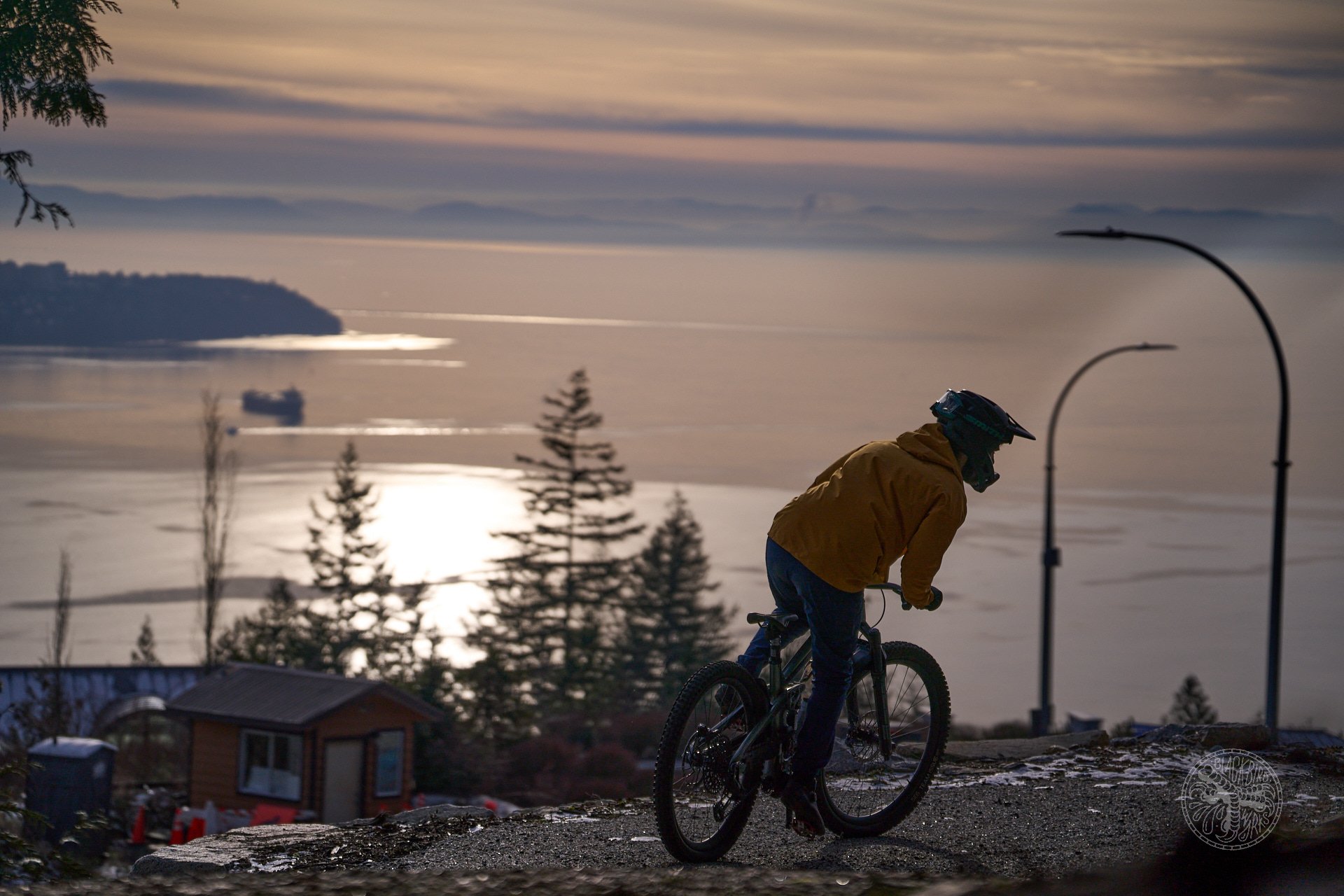
Gravel grinding isn't the Trek's forte, but if you sit and spin you'll get to the top well enough. The active suspension means traction is more than ample, and the idler means kinematics are unchanged by chainring size or gear changes.
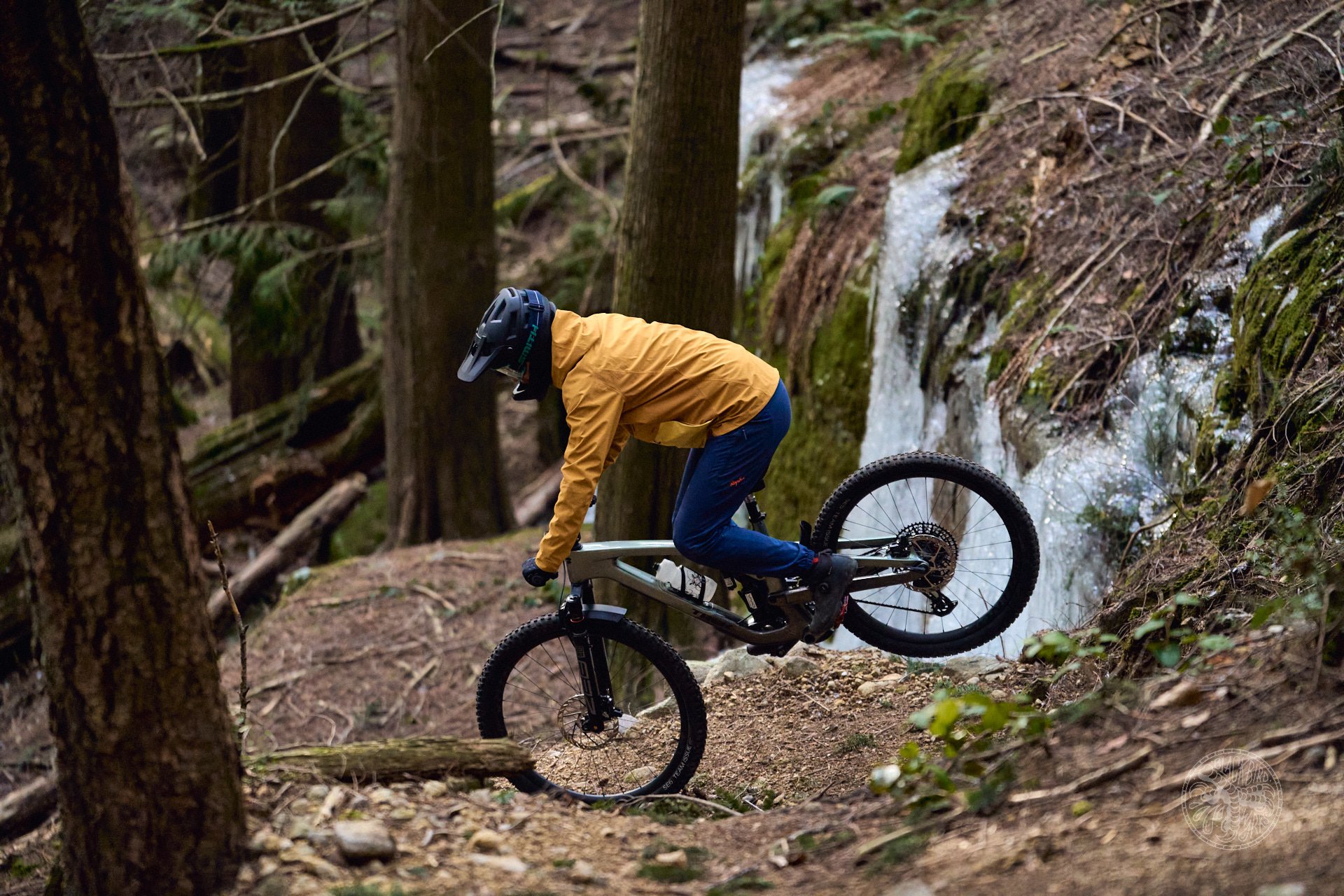
The Slash is a big bike - tight switchbacks are a challenge in either direction. A little euro-turning with mandatory yodel helps on the way down.
Descending
Let’s be honest – this is what the Slash is for and what you probably want to read about. In the first look, I said I expected to ride this bike a fair bit in a full face, and that’s absolutely what happened. The Slash comes into its own when you point downhill; once I got the suspension sorted out and balanced and you’re not in the wrong terrain, anyway.
The wrong terrain is klunking along on slow speed jank with big breakover moves – it’s a big bike with a low bottom bracket that wants you to find a trail (or the fortitude) to open your brake pads, gain some speed, and hit things hard. This also often is a remedy (hey, Trek puns!) for hitting the bash guard: go faster and pull, you weenie. This low bottom bracket also means the Slash likes a fast corner; lean the bike over, load it up, and around it goes.
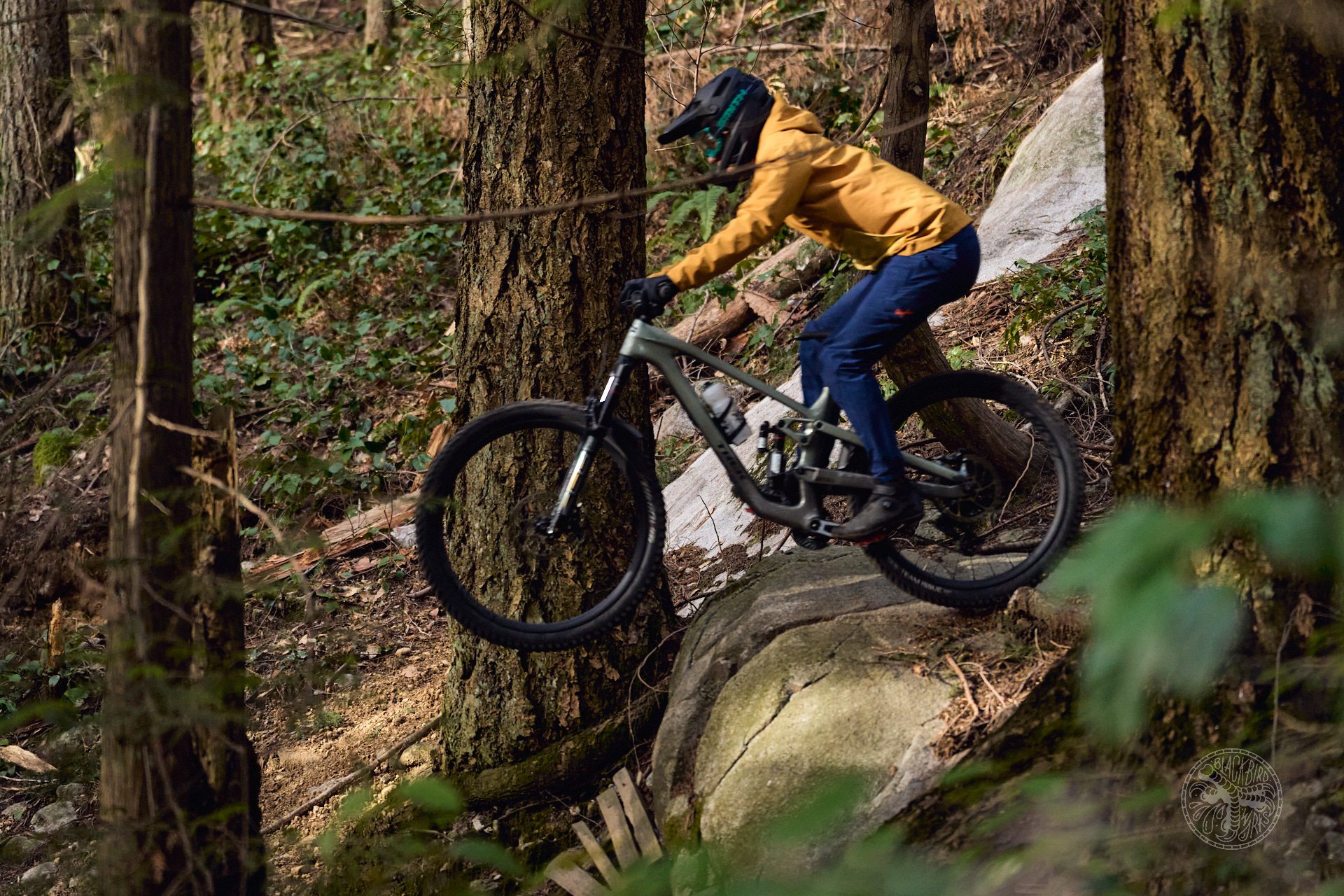
Remember the KLONK from earlier? Here's the recommended solution: yank at speed. Sadly, this landing ended in a flat tire.
The Slash is a bit of a plow - and I mean that as a compliment. It feels very at home on the DH tracks on Cypress Mountain where it's fast and rough. On a couple back to back laps between the Slash and my We Are One Arrival 170, one particular section stood out. There's a fairly high speed step down, big right hander, left hander into a tabletop, and a big rough straightaway. While the Arrival handles this section with zero issue, on the final high speed straight the Slash feels more planted and stable. Feel free to chalk this up to high pivot witchcraft, Vivid Air, or placebo.
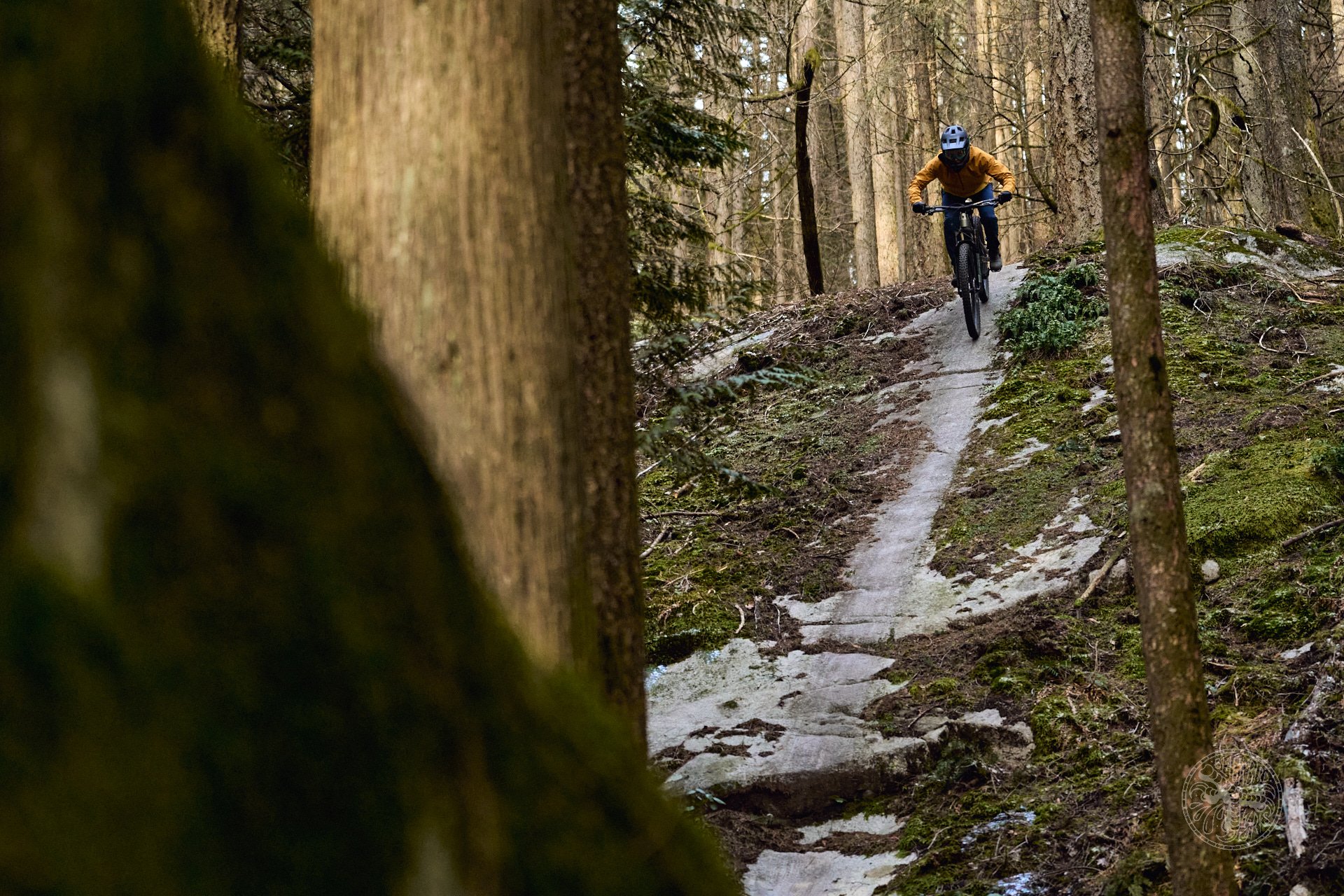
Sub-zero temperatures had me very concerned about rubber durometer and grip levels, but the Slash is a confidence-inspiring platform.
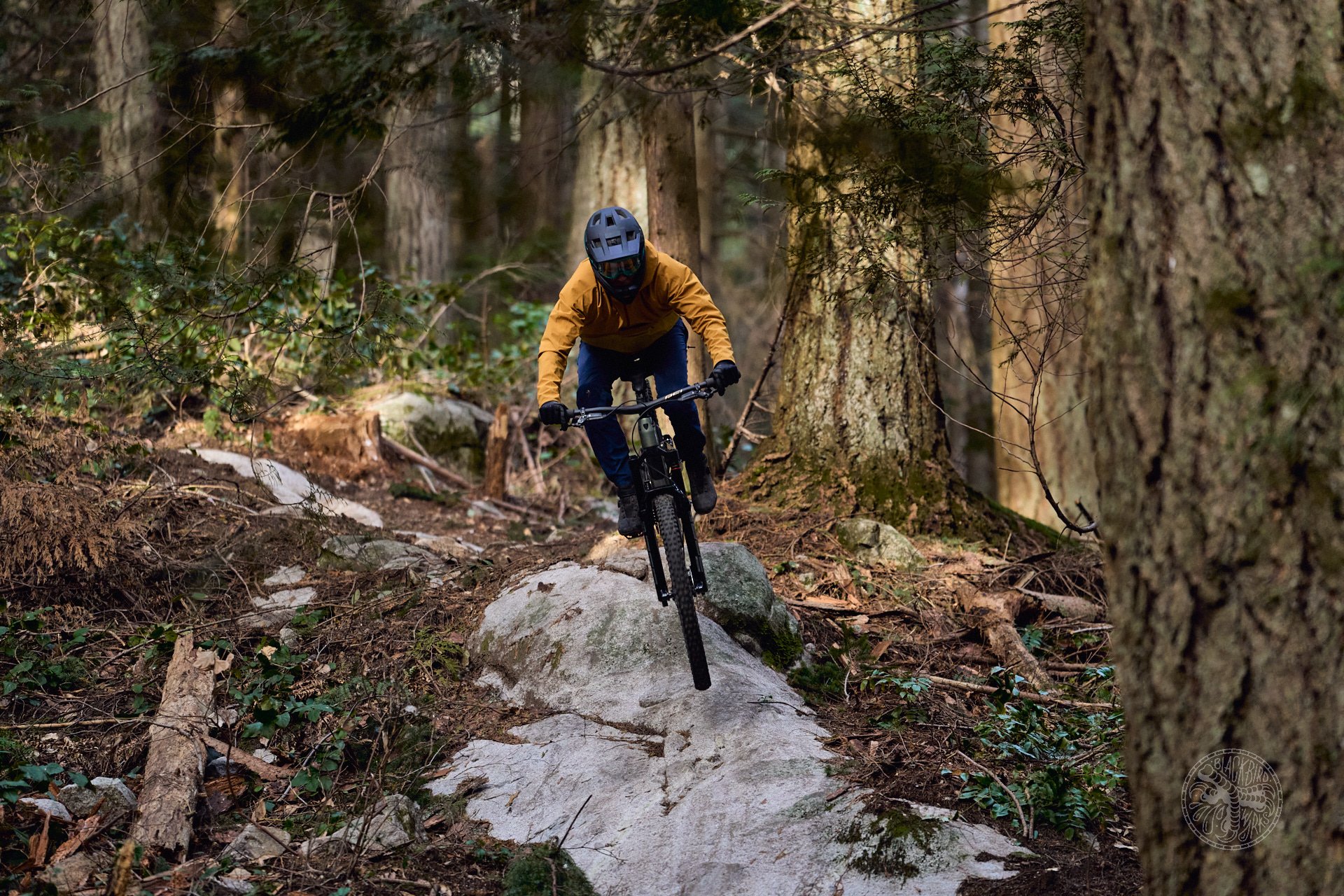
I couldn't decide on which rock slab picture to include, so you get both. On this one there are no worries about rubber durometer - we're not touching the rock.
Conclusions
The Gen 6 Slash had big shoes to fill – and fill them it does. While a bike festooned with extra pulley wheels may not be for everyone and may be a bit of a cleaning/noise/maintenance headache for a lot of folks it’s going to be a worthwhile trade-off for the ability to descend with aplomb.
The idler/tensioner setup proved trouble-free for me during the review period, and it wasn't as annoying as I was initially concerned about.
I always try and figure out who a bike might be for - if you're out shopping, should the Slash be on your list? Sometimes there's nuance here; a bike that excels in certain ways that might not be evident, or to a specific niche user. The Slash is more a case of "it does what it says on the tin". It's a big, burly, aggressive bike that goes up against the likes of the Megatower, Enduro, or Arrival 170, and goes up against them well. Its stock mullet configuration may woo some customers, as will the allure of high pivots. They're unlikely to be disappointed.
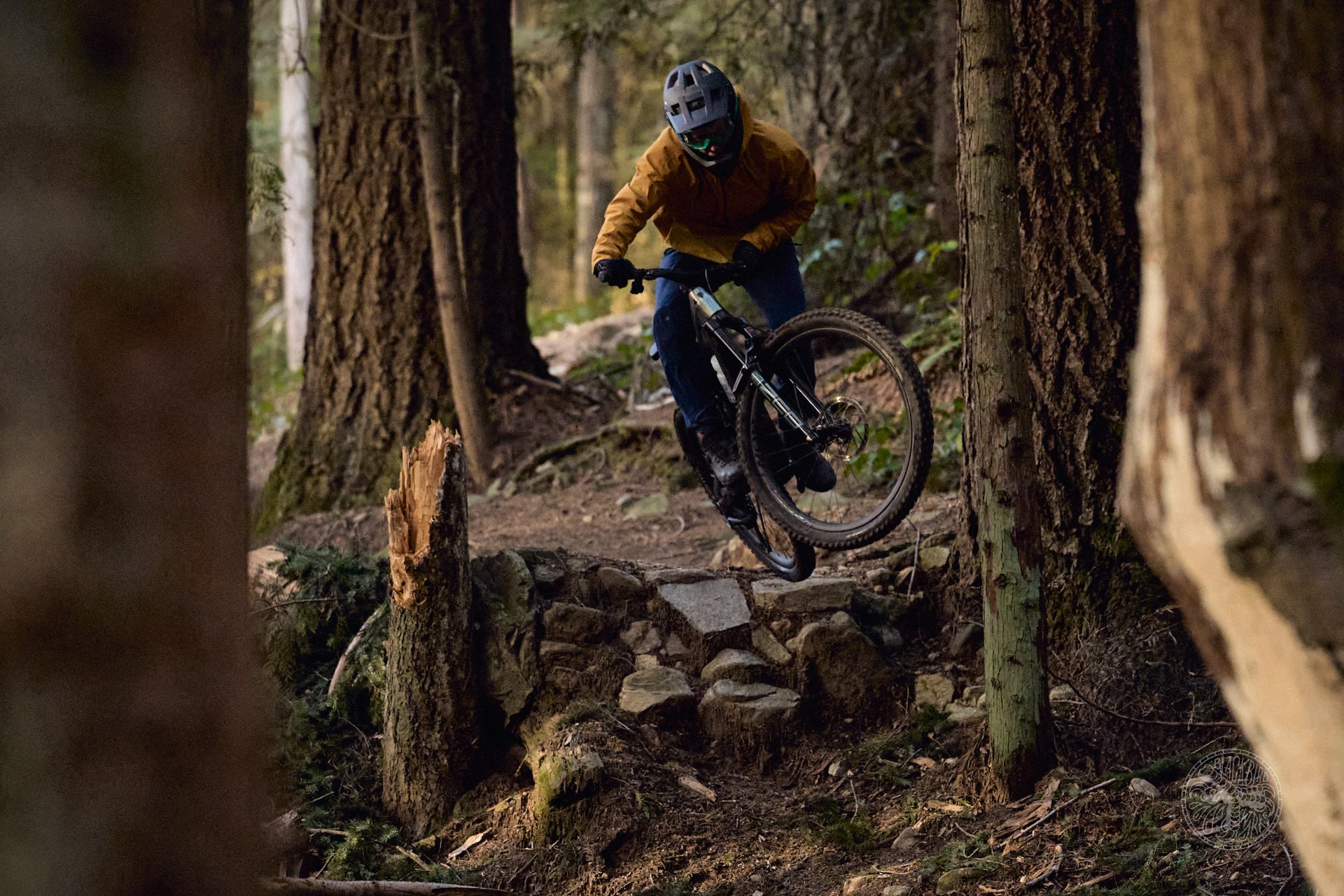
Don't let all my words about 'stability' and 'planted' lead you completely astray, the Slash can still jump, and it's not particularly concerned about what's in the landing.
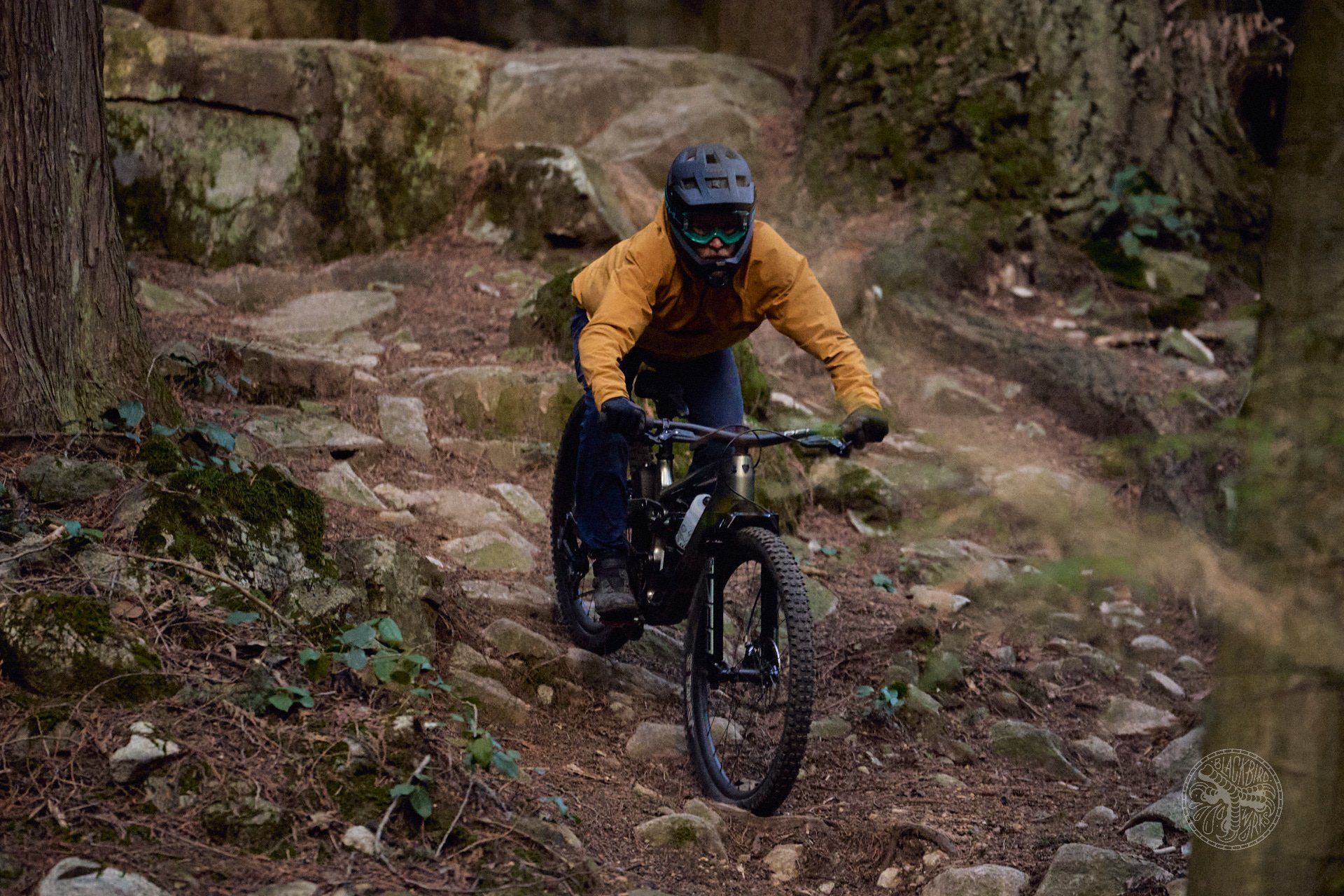
If you're going to buy 170mm of travel, you should use them all, right?
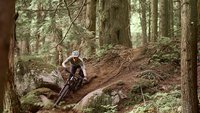
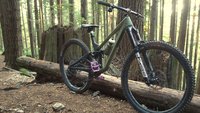
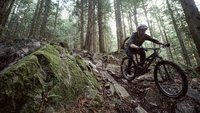
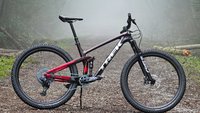
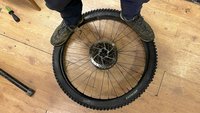
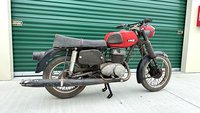
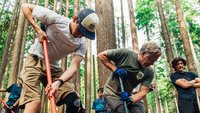
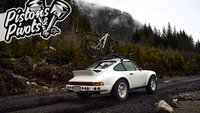
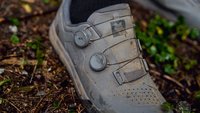

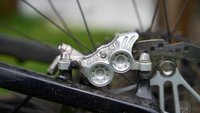
Comments
Kos
3 months, 1 week ago
Great review. Sadly, a bike best-suited for terrain that I've mostly aged out of. Surprising to me that Trek bought into the super-low BB.
Reply
Kenny
3 months, 1 week ago
I wonder how it would be in 29er mode. Yeah I realize the adjusters are supposed to compensate for wheel size, but treks geometry chart makes no sense.
They show 27mm BB drop for both mullet and 29er.
The BB height number is 351mm mullet vs 353mm 29er.
You can't have basically the same BB height with two different rear wheel sizes of the BB drop is the same, so either the BB height number is wrong or the BB drop number is wrong.
If it actually has 27mm BB drop in mullet mode, that is hilariously low, but if the BB height is actually 351mm, that wouldn't typically feel that low, so something is up there.
I totally agree this bike would almost make more sense as a pseudo-DH freeride type bike with more travel and typically configured with a dual crown fork, but I hear people riding them on the shore as their only bike who love them so different strokes I guess. But why anyone would buy this over a Raaw Madonna for example is a total mystery to me. Almost same main pivot location, way less fiddling.
Thanks for the insights Cooper!
Reply
Mike Riemer
3 months, 1 week ago
I believe BB drop is a measurement of the frame regardless of wheel size. Line drawn between center of front and rear axles, perpendicular line drawn down to center of BB. That is your BB drop measurement. Fork length can influence BB drop, but wheel size does not. Wheel size does influence BB height, as does fork length. At least that's my understanding.
Reply
Kenny
3 months, 1 week ago
It used to be defined as the distance from the BB center to a horizontal line drawn from the center of the rear dropouts.
So that's right, wheel size doesn't change BB drop, it's a physical frame dimension. I'm saying the opposite. If you want to maintain the same BB height with a smaller wheel, you need less drop.
If you put a smaller wheel on and don't reduce the drop to compensate, the BB gets lower.
And yeah, maybe they're measuring from the front axle.
Same as seat tube angle though, I don't really care how a manufacturer chooses to measure it, but if you don't know *how* they measured it, the number is potentially useless, misleading, or both. :)
Reply
Cooper Quinn
3 months, 1 week ago
Soooo I've asked around a little. Convention is still to measure relative to a horizontal line from the rear axle, but this isn't standard; as you note, unless you know how it was measureed this can be misleading (much like ESTA...).
Thus, the same 'bb drop' for a 275 and 29 inch wheel results in a lower bottom bracket height, relative to the ground (this is somewhat obvious physically, but how you measure "bb drop" is what we're talking about and what matters here)
Keep in mind too that "wheel size doesn't change bb drop" isn't quite true for mulleting a bike - if we envision going from a larger to a smaller rear wheel, the bb height will change less than it would if you changed both wheels. Marginally less, but less nonetheless.
Reply
Kenny
3 months, 1 week ago
Yeah true, if you change nothing else the bike will slacken out and BB drop will be reduced, like a few mm. Net result of course though is still a significantly lower BB.
If it's actually 27mm drop relative to the 27.5 rear axle, that is a super low BB especially for a bike with that much travel (much lower than 350ish mm, a 350mm BB height 650b bike has about 7mm BB drop).
ackshunW
3 months, 1 week ago
Re: BB drop - I imagine they measure from a horizontal line emanating from the front axle [in this case a 29” in either configuration ]
Reply
Cooper Quinn
3 months, 1 week ago
This is actually an interesting question I dont know the answer to; do they connect axles with this line, or is it horizontal from one axle? On a bike with different wheel sizes, a line connecting the axles isn't level.
Who knows what's industry standard here? Chime in, please.
Reply
Cooper Quinn
3 months, 1 week ago
Horses for courses - if you're not going to put this bike in the right terrain and push it, there's probably better bike choices out there.
Reply
Kenneth Perras
3 months, 1 week ago
You won't be too sad when your storage compartment fits a rain jacket, mid layer, knee pads, or 3 spare jerseys for a triple crown on the hottest day of the year.
Reply
Lu Kz
3 months, 1 week ago
Also, internally routed bikes with huge storage holes in them are the next best thing for ease of use to bikes with external cable routing.
Reply
Cooper Quinn
3 months, 1 week ago
If that's how many layers you're bringing on a hot day triple crown, I'd hate to see you packing for Europe.
Reply
Perry Schebel
3 months, 1 week ago
curious what your thoughts are re: a not-so-high pivot like this vs a conventional configuration (like the arrival); ie, is the added weight / complexity / drag adequately offset by perceptible added chunder munching capability? my hp experience has only been of the very high variety, where chassis dynamics differences are very tangible. i assume something like this would be relatively subtle.
Reply
Cooper Quinn
3 months, 1 week ago
that's the question I suppose - but like anything there's no one answer. For me... no, probably not worth it. But that decision is worth expanding upon, perhaps. I almost want the Slash to be a bigger bike. Gimmie 180, or 185 with the ability to put a DC fork on it... and suddenly I'm keen? A bike that's just unapologitic about it all. A park or freeride edition of this bike, and I'd be all over it. As a swap out for my Arrival? No, I just pedal too much and find the noise and faff of it all a bit too annoying.
As you note, its not a high-high pivot, its more of a mid-high pivot - without testing back to back versions with different pivot locations its really hard to say, but its certainly more hammer and less scalpel, and a good chunk of that comes down to how the rear wheel moves.
Reply
Perry Schebel
3 months, 1 week ago
an a/b comparison of this & the previous generation slash would be interesting for sure.
Reply
Cr4w
3 months, 1 week ago
That is exactly how I felt after six months on a Forbidden Dreadnought. Really good in its way but I preferred to settle on something less complicated for my daily driver.
Reply
chris frolich
3 months, 1 week ago
This kinda honesty shocks me in product reviews!
-paraphrasing: "It's awesome. No, I would not buy it".
Reply
Jerry Willows
3 months, 1 week ago
I've got the new Slash coming from an "new" Enduro and I can honestly say that the Slash does everything better. I put HS2 rotors on, different tires, 180mm air shaft with minus 1 cups (just over 62 HA). I can also climb things I couldn't on the "conventional" bike. Not all HP's are created the same but I think Trek nailed this one. 100% AS and AR seems to work well.
Reply
Cooper Quinn
3 months, 1 week ago
Interesting that yours didn't come with HS2 rotors.
"I can also climb things I couldn't on the "conventional" bike." Elaborate? You can climb things with the slacker HTA and taller stack that you couldn't before??
Reply
Jerry Willows
3 months, 1 week ago
I got the GX model and it came with centerline rotors.
When I mentioned "conventional", I meant non HP. I'm probably most impressed by the climbing and composure on the dh of this bike.
Reply
Cooper Quinn
3 months, 1 week ago
Aaah, gotcha. Yes, all things considered the Slash climbs well. Its not exactly a mountain goat, but its a big bike. It's a great bike for the terrain you ride, and how you ride, for sure.
Reply
Jerry Willows
3 months, 1 week ago
one other thing I really like on the bike is the ability to fit a 210mm dropper.
The rim tape on the wheels are also a take off right away along with the grips and tires.
BarryW
3 months, 1 week ago
Another great and insightfully review Cooper.
I would be very curious to see how differently a bike like this rides compared to the bike I ride. But your points about some of the negatives don't make me want to rush out and put much effort into that.
Reply
Cooper Quinn
3 months, 1 week ago
Thanks Barry!
Reply
LDG
3 months, 1 week ago
Just buy a Kavenz VHP 16/18 and you have all mentioned above and more ;)
Reply
Allen Lloyd
3 months, 1 week ago
Looking online does Trek sell this with 2 29 inch wheels? It says you can run it full 29'er, but all the builds appear to be mixed.
As a primarily park bike with some aggressive backcountry days mixed in how would you compare this and the Arrival?
Reply
Cooper Quinn
3 months, 1 week ago
No I don't believe you can purchase it as a full 29er. And only the frame-only option comes with the 29er lower shock mount.
Primarily a park bike?
Define "aggressive backcountry days"; do you mean aggressively long days with aggressive vertical? Or aggressive terrain?
Reply
Allen Lloyd
3 months, 1 week ago
Typically, aggressive in both length and terrain. We have some big mountain loops that are both long and include opportunities for rowdy features along the way.
My current bike is a first gen Hightower and it does the miles just fine but tends to make me question attempting some of the features. Based on also riding a current Stumpjumper I have found the steeper seat tube angles on bikes makes the climbing easier to lug around more travel.
I would like my next bike to have more travel but still pedal reasonably well so it can tackle these big days with big features. But also be comfrotable living at the bike park for the majority of its time.
Reply
Cooper Quinn
3 months, 1 week ago
Tough call - bike park and backcountry (even with some rowdy bits) fall at pretty extreme ends of the spectrum, ha. An Arrival would be a good choice, maybe in 152 spec? What about Stumpy Evo? Current Hightower is a great bike, too.
Reply
Allen Lloyd
3 months, 1 week ago
Stumpy Evo is on the list as well. Current Hightower doesn't feel right to me. I have ridden a few with different suspension and not a one of them has felt comfortable.
Reply
Shinook
3 months, 1 week ago
I can't speak to this bike but I've ridden other bikes in this category and the pedaling performance has, IMO, improved a lot over the years. It's to the point now that I feel like the issue with big bikes has more to do with geometry, mainly length, reach, and HTA (steering) than it does worrying about the suspension sucking your energy or wallowing around while you pedal.
My (long since sold) current-gen Enduro from about 3 years ago is one of the best pedaling bikes I've owned, even over much shorter bikes I owned. Everyone immediately looks at the travel numbers and assumes it's gonna climb like a wet turd, but I found it very responsive and very easy to pedal on longer days. The issue was climbing it on punchy, technical XC-ish tracks where you have to maneuver its massive wheelbase around tight turns or up technical features, the lack of maneuverability becomes more challenging. Same way with my Steezl, very responsive, pedals great, very efficient but once you get into trails that are undulating, it becomes a lot more work. Both of these bikes, and I assume the new Slash, are going to do better on trails where you have extended climbs and descents, not trails where you have punchy ups/downs the entire time.
Much of this can be mitigated with tire choice, also. If you are riding undulating trails and using DH casing Minions, that probably has more to do with why the bike feels draggy or inefficient.
Just don't weigh them. For some reason, the moment you weigh a bike, it becomes 5 pounds heavier the next time you ride it.
Reply
Cooper Quinn
3 months, 1 week ago
I'd agree with a fair bit of that - certainly bike kinematics have improved significantly, and don't discount how much better dampers have become. Both of those together means pedaling big bikes isn't the chore it once was. I'd also very much agree that tires play a huge role (roll? puns!) especially on undulating terrain. Although on road climbs too, with suspension locked out, riding my Maxxgrip Assegai/DHRII combo vs DC Forekasters feels like dragging a piano... but I digress.
Yes, geometry is a big piece of the puzzle on technical climbs, tight sections, and steep climbs. There's no effective way to overcome it like you can (to a degree) with kinematics by using dampers, lockouts, etc.
Weight does matter, but perhaps less than some folks think; look no further than world cup XC where bikes are getting a bit heavier these days for a more rounded performance envelope. But, anyone who says their bike climbs like an XC bike should ride a proper XC bike for one ride... its wild.
Reply
Shinook
3 months, 1 week ago
Oh I agree completely on weight, I was 90% joking when I mentioned that. I've had 27lb bikes and I've had 38lb bikes, the difference in how they get moving is remarkable. I just find myself thinking a bike weighs 30lbs, only to weigh it and realize it's...more than that.
Allen Lloyd
3 months, 1 week ago
This aligns with my experience. I do a Pivot demo every year and I tell people I have no idea why anybody buys anything other than a Firebird. It climbs just as well (possibly better due to traction) as any other bike they build.
The Enduro is on my short list, I keep waiting to see if they do a new one and the current gets blown out at deep discounts.
Reply
Curveball
3 months, 1 week ago
Hmm, it appears to me that the Orbea Rallon would fit what you're looking for very well.
Reply
Allen Lloyd
3 months, 1 week ago
I have been trying to find an opportunity to ride one. Current front runner is a Propain Spindrift I rode one and couldn't believe how well it pedaled. I have since been interested in the Arrival, Chainsaw, and this Trek due to these reviews. Stumpy Evo / Enduro are on the list along with a dream of an Atherton.
The Propain is attractive due to an aluminum option. Many of our big mountain rides include questionable shuttling and I am tired of worrying about carbon in the back of trucks.
Reply
Mike Kittmer
3 months, 1 week ago
Latest Giant Reign then. Lighter than many enduro bikes, steep seat angle, plenty O travel, slack, adjustable, 29 or mullet. Think of it as an all mountain bike vs full out enduro.
Reply
Johannes Hochleitner
2 months, 3 weeks ago
-what about a Nomad V4 with a coil shock? I'm aware its full 27,5 but there are still a few new ones left (at least here in europe) at a very reasonable prize and you could pump it up with a beefier fork and/or a DC or a cascade components link? I feel that it's very forgiving on longer days but you can still push it if you want it...
-if full 29er a Banshee Titan? I also own a Spitfire V2 and its too good to be replaced and the support from Keith is mindblowing.
Reply
Lu Kz
3 months, 1 week ago
How 'athletic' of a descender is the new slash?
I'll explain a bit: I find with the super race focused high pivot enduro bikes, they aren't as rewarding as some (the WAO being a standout in the category, likewise something like the current Altitude) for high speed, push/pump/jump through tech style riding rather than pure plow and smash. It sounds to me like the slash leans towards the plow side of the spectrum - your thoughts?
Reply
Cooper Quinn
3 months, 1 week ago
I had an Altitude prior to my WAO, so interesting examples! And I follow what you mean; I think this is also exemplified by riding bikes through moderately techy undulating terrain where some bikes are more rewarding than others. Bikes like the Arrival feel faster, I don't know if they actually are or not.
You're reading this right, while the Slash is certainly not a DH sled and can be plenty "poppy" or "playful" or whatever your preferred adjective may be, it doesn't require the attention that some bikes do. It doesn't care if you're off line a bit.
Does that help?
Reply
handsomedan
3 months, 1 week ago
I think cooper nailed the description here. To me this is the bike’s greatest pro. It offers both athleticism/ pop / playfulness and can bail you out comfortably if you go off line into some unintended or not rough terrain.
Reply
HMBA106
3 months, 1 week ago
Thanks for the review! The main thing keeping me away from a Slash at this point is having to choose between a $10K CAD price tag for the 9.8 (rough) or a realistically >40lb sled in the alloy 9 (also rough). 40lb bikes have their place, but not for me as my only rig. I'm sure the ~$7k 9.7 is in the pipeline for next year.
Reply
Matt Cusanelli
3 months, 1 week ago
This is something I’ve contemplated as well, specifically value between 8, 9, 9.7, 9.8
Trek hasn’t offered a Slash 9 since about 2014 (in North America) so was stoked to see this as an option. The 9.7 models of past years, at least in Slash and Remedy have been a great foray into carbon and can be upgraded as parts wear out) but often times they are more expensive than the 8 build and have lower end parts. (Eg. full GX vs GX/NX mix). From a min/max perspective the 8 build’s with an insert/proper rubber/larger rotors/damper upgrade would be great value.
The thing that I run into with the 9 vs 9.8 is that there is a ~2500 CAD price difference but the 9 doesn’t have carbon wheels. The lifetime warranty on Bonty carbon wheels is huuuge. Say a season in and those Alu rims are destroyed, (which I acknowledge is rider dependent) upgraded to carbon for ~1700 CAD. Now the difference between 9 and 9.8 is <800 CAD which seems like a paltry sum to pay for a carbon frame from the get go.
Anyways, just food for thought, if I was picking these up in a few years used then my standpoint would likely differ :)
Reply
Mammal
3 months, 1 week ago
"There's a fairly high speed step down, big right hander, left hander into a tabletop, and a big rough straightaway."
Bottom of Lower Meat Sweats?
Reply
Cooper Quinn
3 months, 1 week ago
Do you ever wonder where that information lives in your brain? Like... why?
You've had this conversation: You know about 3/4 of the way down the steep bit there, there's a tight left around a tree with a root on the inside?
...and you can picture the root. That information is in your brain. You can go back and ride a trail you haven't ridden in a decade, and somehow... at least some of that is still there in your brain. I always wonder why. Like presumably that's stored in braincells that could be used for something useful, but it isn't; its sitting in there next to No Doubt lyrics from 1994's Tragic Kingdom.
In answer to your question, though... yes. That's exactly where I'm talking about.
Reply
DadStillRides
3 months, 1 week ago
Because those rides are worth the space in your brain, that's why.
Though I can't speak to the no doubt lyrics.
Reply
Cr4w
3 months, 1 week ago
I think it's one of the secret benefit of riding - I have so much trail detail minutiae it's astonishing to consider. The more you can remember the more you can anticipate so the more you can be ready and the faster you go. Isn't that why we're here: accuracy and speed to get those feels?
I think it's good for your eyes too. Constantly varying focal length and darting around to take in the trail, surface and surroundings makes for strong eye muscles. I think these things are really good for you. The elbow tendonitis is less good but an acceptable cost of doing business for forearms that would make Popeye jealous.
Reply
Pete Roggeman
3 months, 1 week ago
What's really amazing to me is that apparently everything is in there, but we're just not very good at accessing most of it - almost all of it, really. Every ride. Every root. Every second from every day. That's a lot of data. Whoa.
/Bill & Ted internal monologue
Reply
IslandLife
3 months, 1 week ago
Yes!! The part I always find hilarious is when I’m taking someone new to a trail and talking about what to expect and what’s coming up next etc… I always seem to forget about all the shitty parts of the trail! “Man, totally forgot that this trail had so many climb sections on it!” Haha. Always only seem to remember the good parts!
Reply
Mammal
3 months, 1 week ago
It's definitely interesting about the memory storage of trail and response details.
I love Jersey to lower Meats, and that rough final stretch gives me the best feeling when ridden well. I gain significant time on 9/10 of my DH buddies there.
Reply
Cooper Quinn
3 months, 1 week ago
I'll add to the second one to see if anyone can get it...
You know about 3/4 of the way down the steep bit there, there's a tight left around a tree with a root on the inside? Immediate right, and the a left turn/hip/stepdown before the ladder. Ladder huck to flat - slight left, tight right with a log on the outside.
Reply
Skooks
3 months, 1 week ago
That's exactly the section of trail that I was thinking about when I read that sentence.
Reply
Tjaard Breeuwer
2 months, 1 week ago
Thanks for this review. When I heard about this bike at release, I thought it might be an option for my 16 year old.
The kid rides a Stumpy EVO set up with 170 mm fork and mullet rear and races enduro. So, a dedicated 170 mm enduro, stock as a mullet, with the same 63 degree HA they have now, sounded like it might just be perfect. The high pivot perhaps making up for some of the “hang ups” of the smaller rear wheel.
But, we live in the Midwest, so a lot of our trails ARE “tech undulating “cross mountain” style connector trails”. And the gnarly stuff IS “slow speed jank with big breakover moves”.
We have very few local trails that are fast. And the 2 I can think of are not very rough or steep. So, basically, it’s either rough and steep, but tight, or rough and less steep, or flatter, smoother and faster.
That means that both for fun riding, but also for the enduro racing that we do, this bike would seem to be a poor match.
So thank you for spelling it out so clearly where the bike shines and does not.
Reply
Please log in to leave a comment.